April 1st, 2011 — 4:37pm
Bangkok has more that its fair share of impressive bridges but the Bhumibol Bridge, named after the King of Thailand is one of the most spectacular.
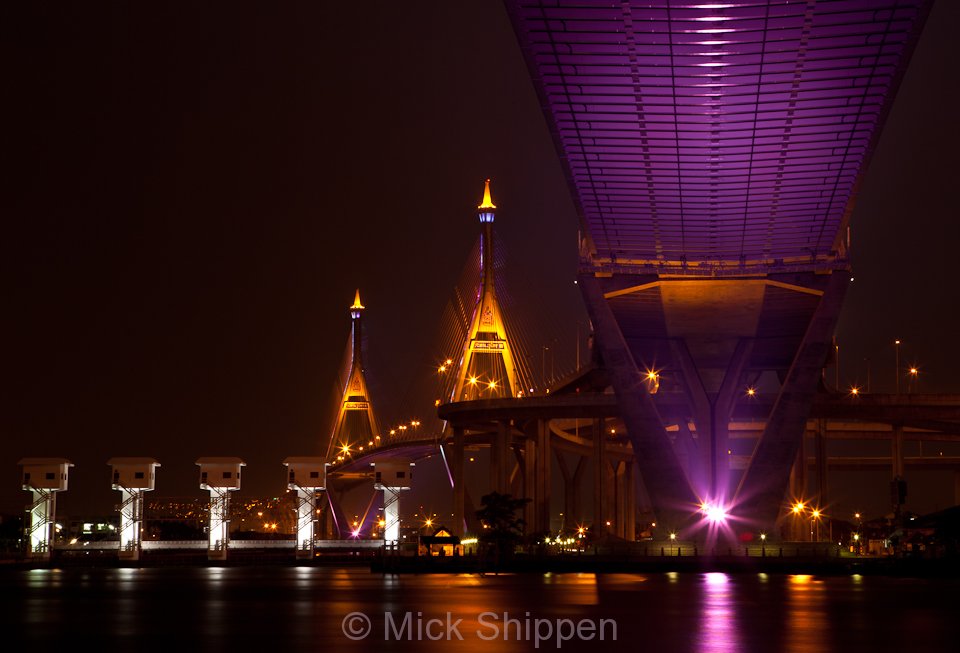
It is part of a 13 kilometre long industrial ring road that connects southern Bangkok with Samut Prakan Province. It’s also just spitting distance from where I live so last night I went out to take a few shots of this monumental structure.
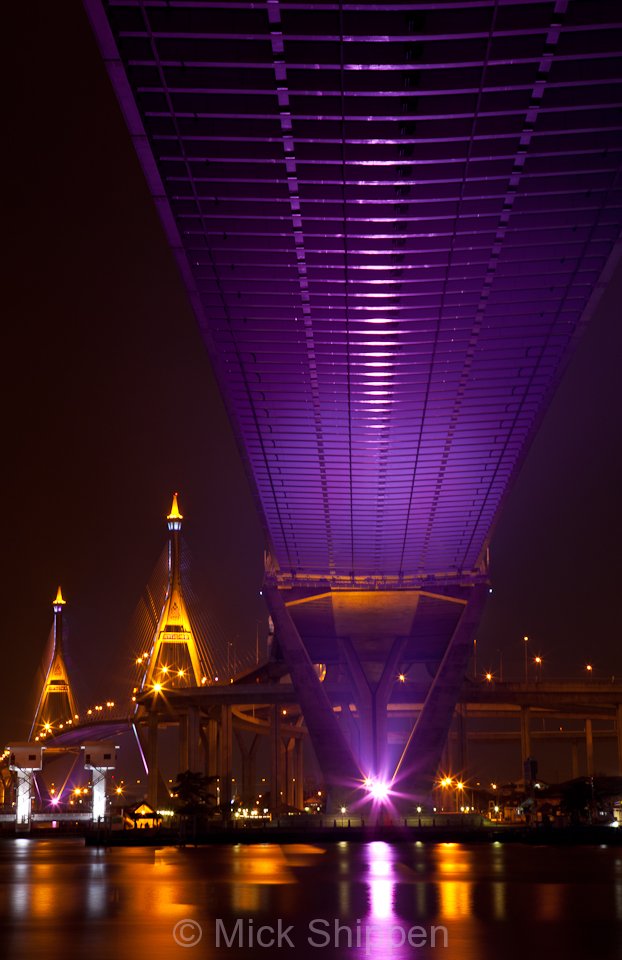
The bridge spans and features two spans of 702 metres and 582 metres supported by two diamond-shaped pylons of 173 metres and 164 metres in height. At sunset, the multicoloured lights are turned on and the bridge is visible for miles around.
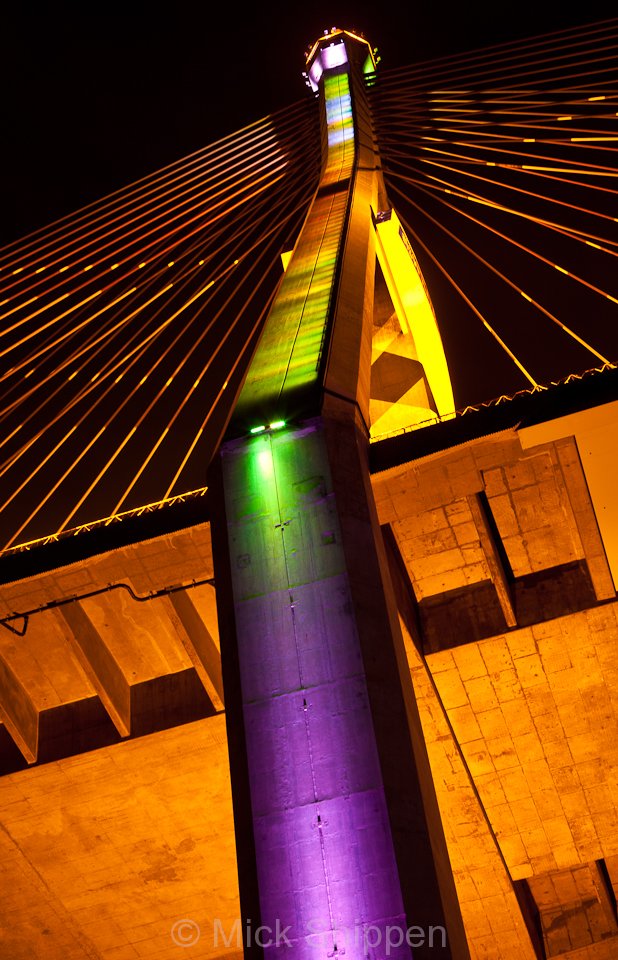
Comment » | Travel
January 20th, 2011 — 7:13pm
It’s all very well having a photo blog but actually getting round to posting is another issue altogether. I realise I have been pretty lax of late but a punishing work schedule means it is all writing and photography but no time to post. So, time to hurriedly get something up before heading off to Chiang Mai for a few days. Or should that be daze. It’s all becoming a bit of a blur.
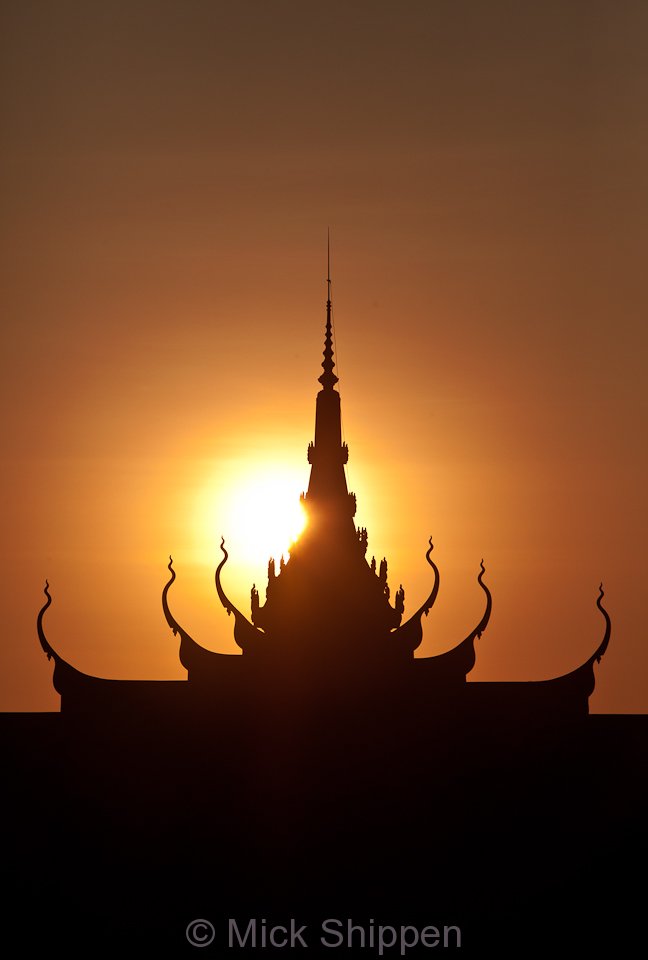
I recently returned from a whirlwind trip to Cambodia, spending a couple of nights in Phnom Penh before heading down to Kampot on the coast.
On my first day in Phnom Penh the sky was white and lifeless; not what my client wanted so I spent a bit of time playing around with silhouettes at sunset in front of the National Museum, a rather striking building in the heart of the city.
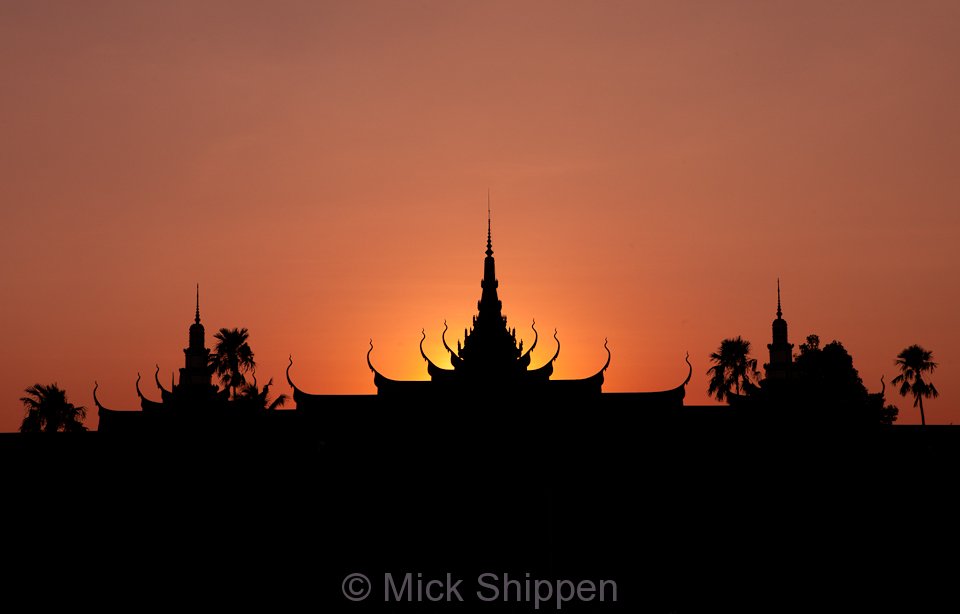
The beautiful red building of the National Museum houses a wonderful collection of over 5,000 ancient Khmer works of art and sculptures. Due to the increase in visiotrs to the country recent years have seen a blossoming of Khmer arts and crafts and the are many boutiques clustered on Street 240 and a host of art galleries close to the National Museum on Street 178, commonly referred to as Art Street.
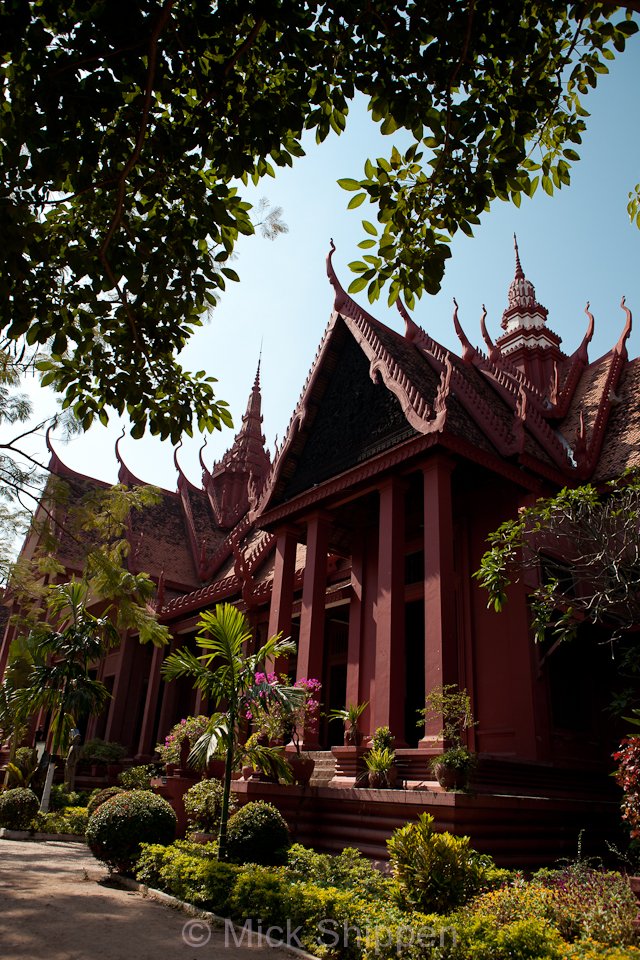
Fortunately the sky was a gloriously blue for the rest of my trip and I got some acceptable shots in Kampot and upon returning to Phnom Penh. I’ll try and post a few more soon.
Comment » | Travel
January 6th, 2011 — 5:08pm
Of course, the downside of photographing Thailand’s main attractions is the inevitable temple and Buddha image overload. I’ve been traipsing round the major sites in Bangkok including one of my favourites, Wat Pho.
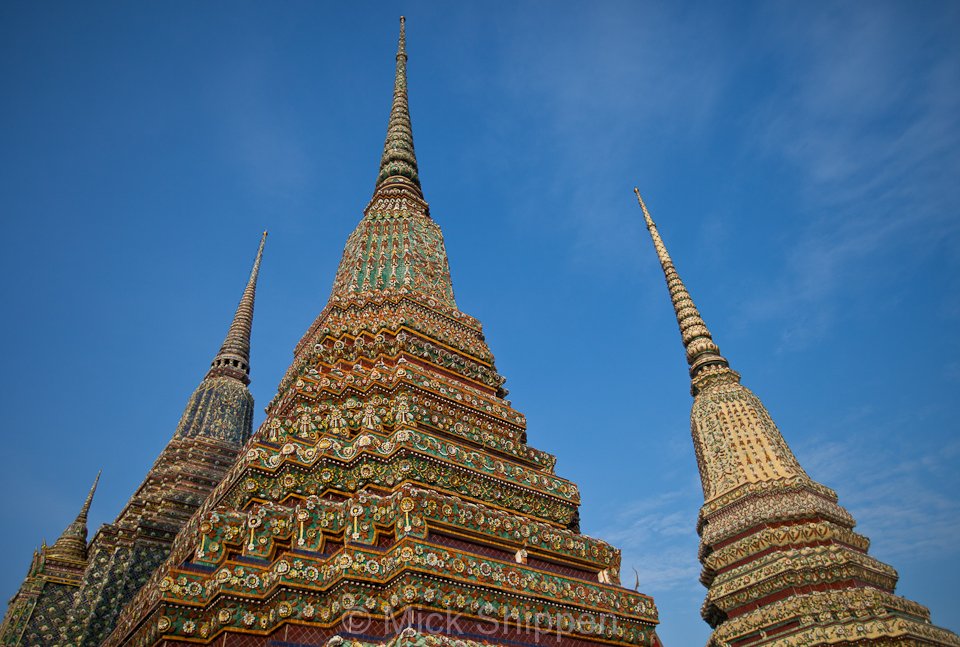
Also known as Wat Phra Chetuphon, Wat Pho is one of the finest temples in Bangkok and renowned for a huge reclining Buddha housed within a beautifully decorated hall. The 46 metre long and 15 metre high image was constructed in 1832 during the reign of King Rama III.
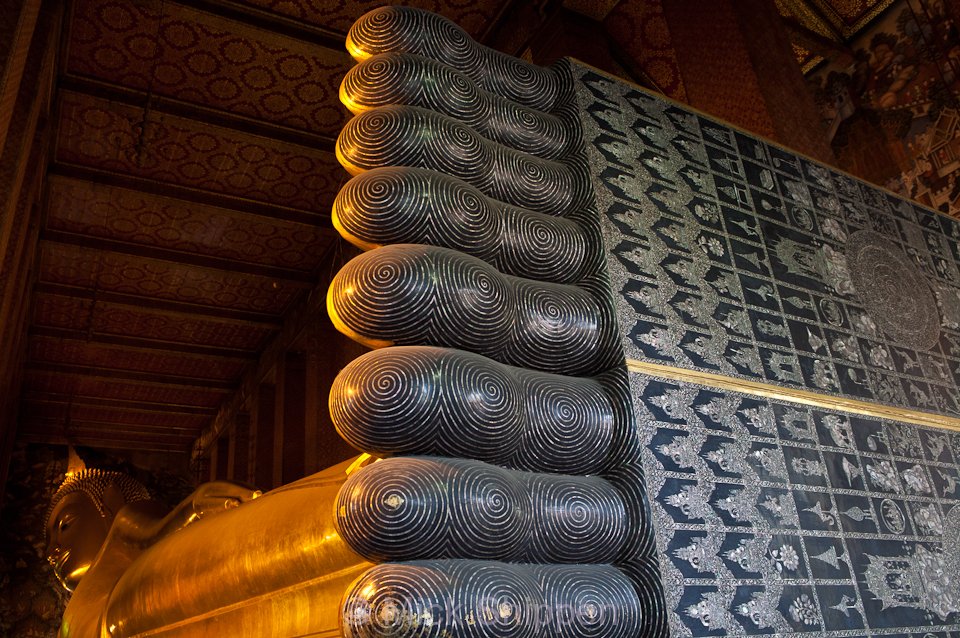
Designed to illustrate the passing of the Buddha into nirvana, the enormous feet feature mother-of-pearl inlay decoration showing the 108 auspicious characteristics of the true Buddha.
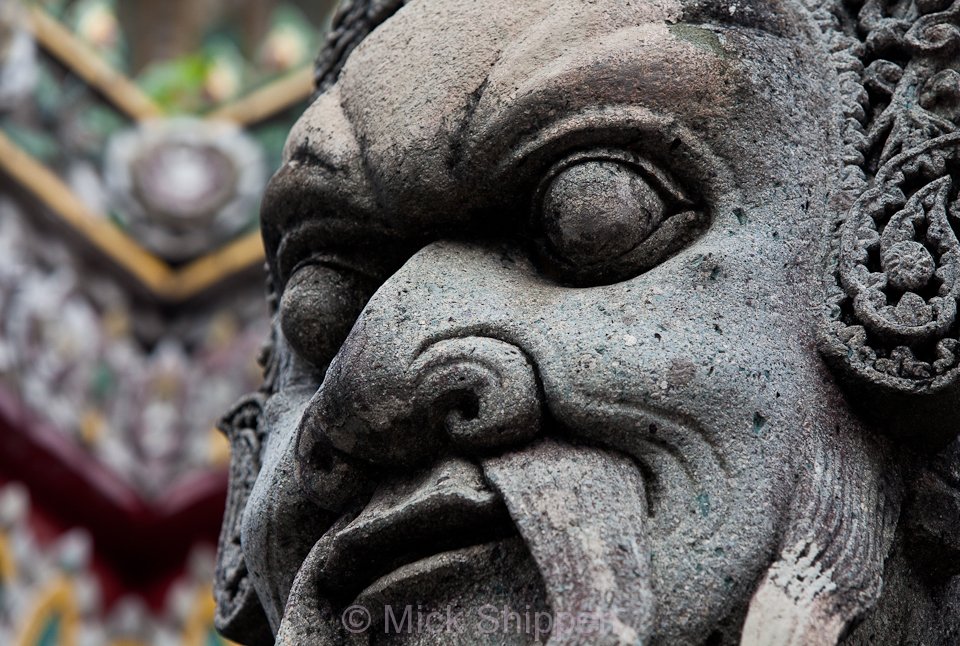
The inner and outer galleries are lined with 788 Buddha images, the largest collection in Thailand, and stone carvings of Chinese figures. Wat Pho is also a centre for the teaching traditional Thai medicine and massage. King Rama III instructed that the temple should become a centre of learning and had traditional knowledge inscribed on stone slabs.
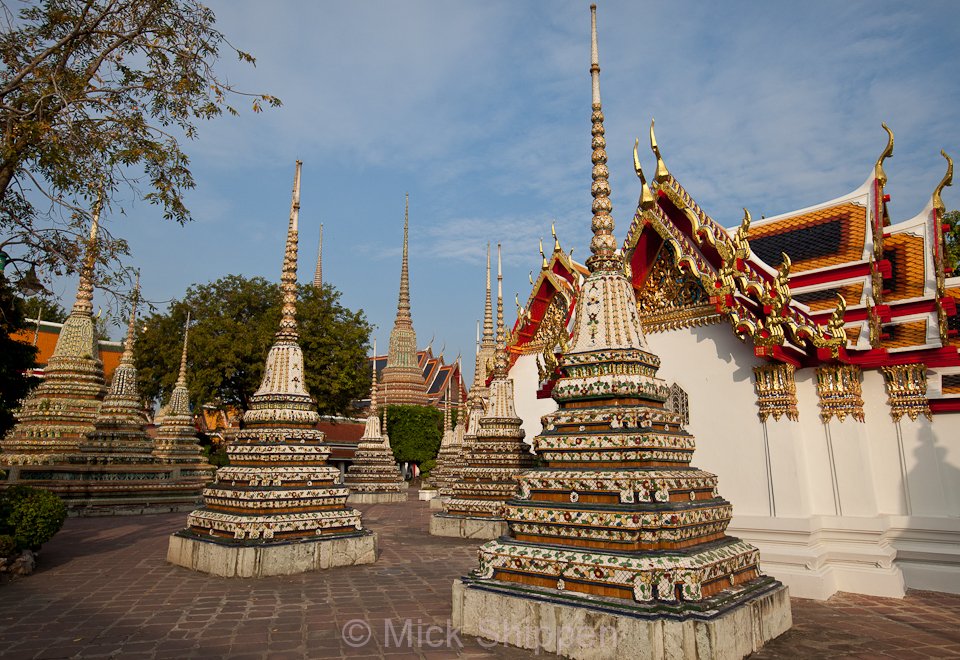
It is practically impossible to enjoy the temple without hordes of tourists but if you get there early you can grab a few quiet moments.
Comment » | Travel
November 23rd, 2010 — 5:04pm
Thailand’s annual Loy Kratong festival was held on Sunday, the night of November’s full moon. I did hope to spend an evening enjoying the atmosphere and getting dozens of shots but I wasn’t really in the mood for it. I ended up with just a few – enough to get me out of trouble.
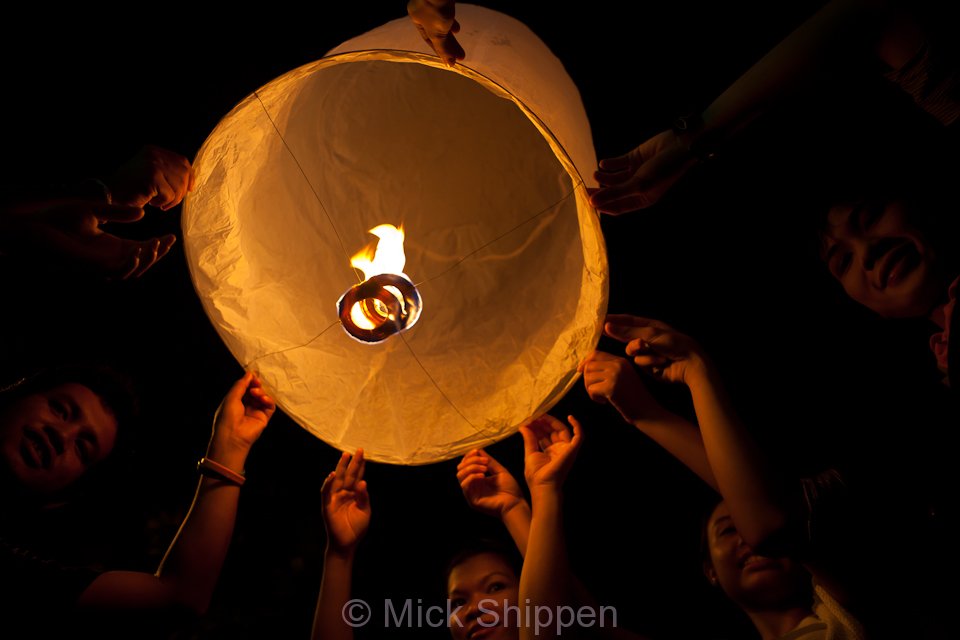
During the evening, millions of people across the entire country go down to the nearest river to float their kratongs, small rafts made from a banana palm and decorated with flowers, a candle and incense. They believe this will bring them good luck throughout the year. In more recent years the gesture of floating a kratong has also become closely associated with romance so I bought myself the most beautiful kratong I could find and watched it float away, carrying my love to Klong Toey.
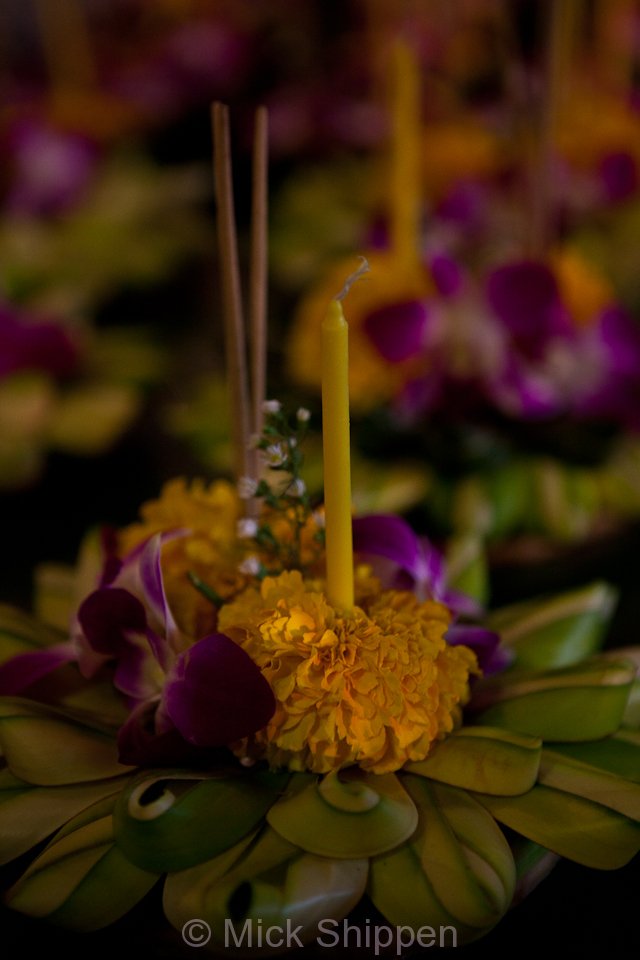
In Chiang Mai and the north, the festival is known as Yi Peng and lanterns are released into the night sky. This tradition has also now been adopted in Bangkok.
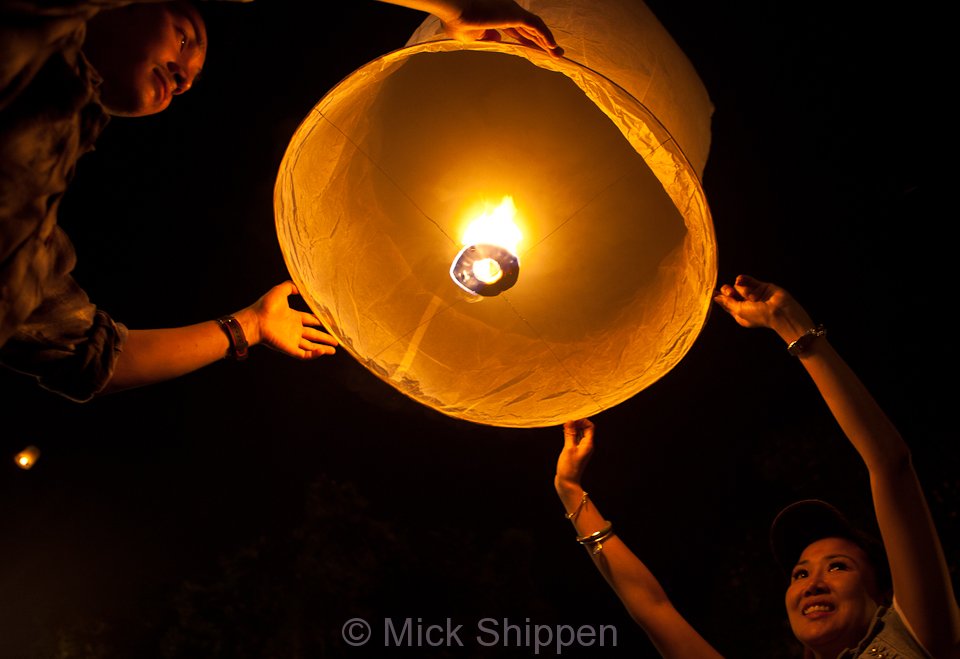
1 comment » | Travel
November 21st, 2010 — 12:54pm
The provincial capital of Oudomxai is overlooked by visitors to Laos. Most stop here for one night or simply pass through on the way from Luang Prabang to Luang Nam Tha. I’ve stayed here on several occasions now and always enjoyed it. Stay well away from the hotels, guesthouses and restaurants in the guide books and you can have some great experiences here.
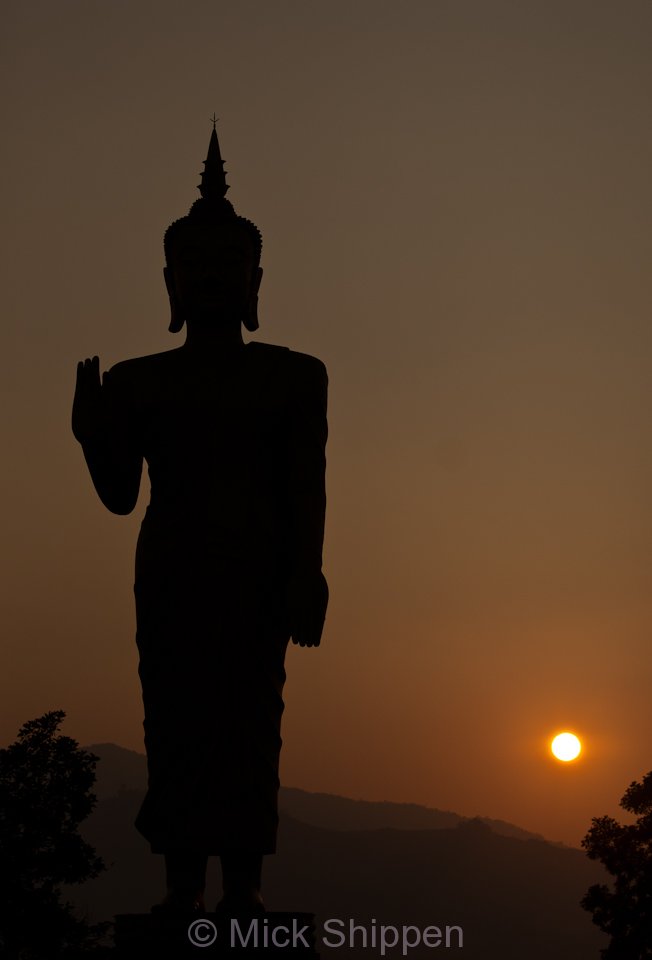
There are some outstanding and lively local restaurants to be found with menus unsullied by unadventurous ‘travellers’ and a couple of bustling markets to explore. The beautiful rolling hills that surround the town are also populated by hilltribes so it’s a great place to hang out for a few days.
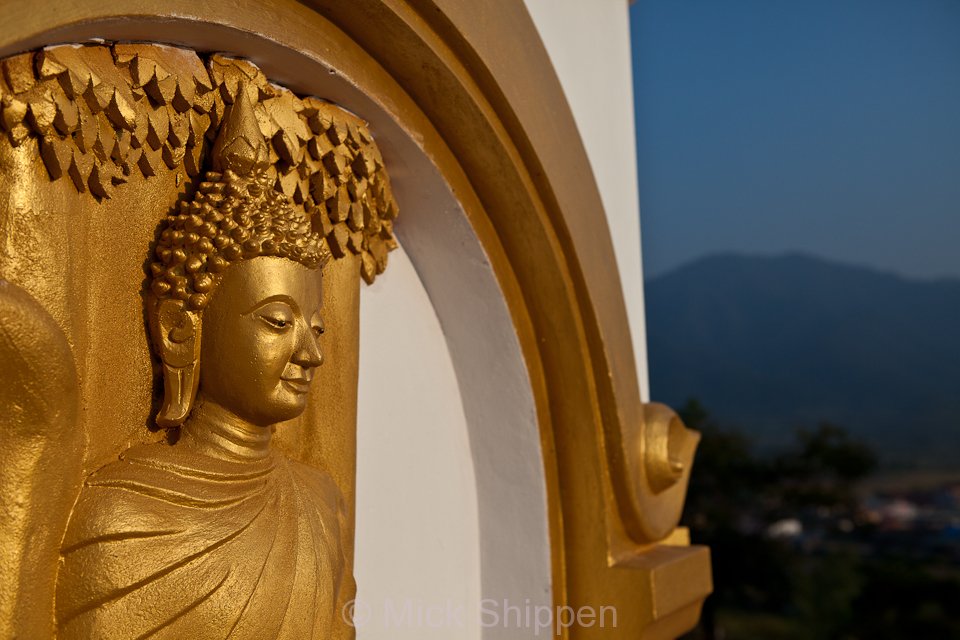
For a good view across Oudomxai, it’s worth taking a stroll up to Phu Tat temple on a hill in the centre of town. The chedi here dates from the 14th century but the golden Buddha image is a much more recent addition and was erected in early 2010. Arrive shortly after 5 p.m. and wait for the sun to sink behind the 15-metre statue.
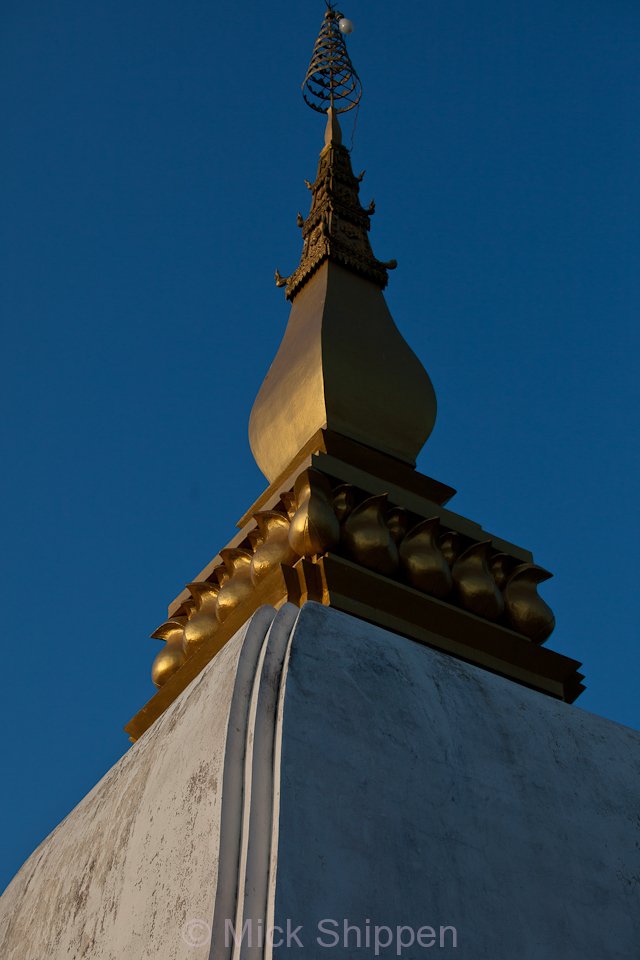
Comment » | Travel
September 16th, 2010 — 6:44pm
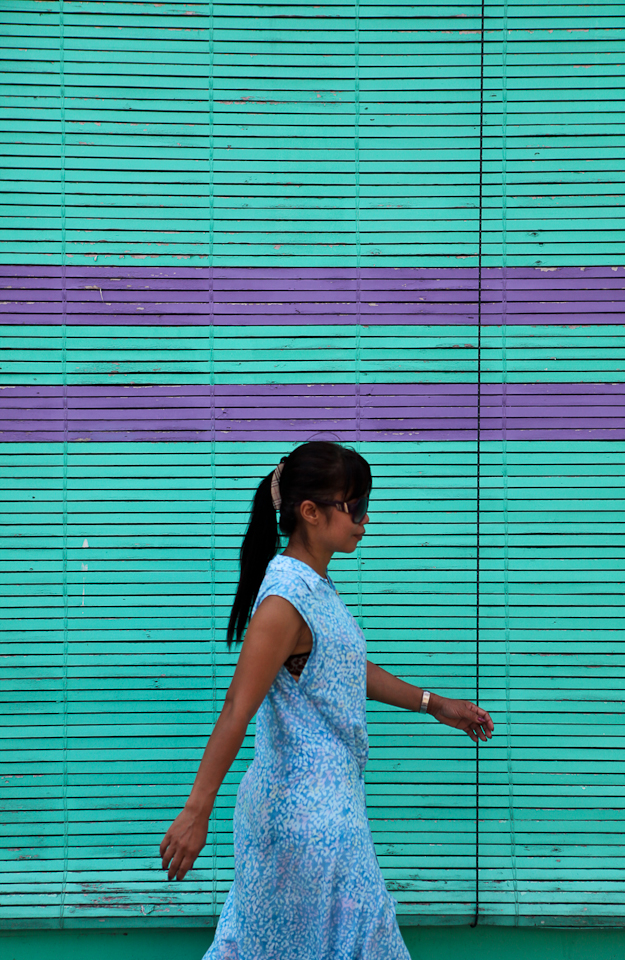
I have just returned from a much needed long weekend in Penang, a large island off the west coast of Malaysia. The population of almost a million is predominantly Chinese with a scattering of Malay and Indians making for a vibrant and colourful mix of cultures and cuisine. Although Penang has seen a considerable amount of careless development in recent years, the old district within the capital, Georgetown, is now a UNESCO World Heritage Site and hopefully safe for future generations to enjoy.
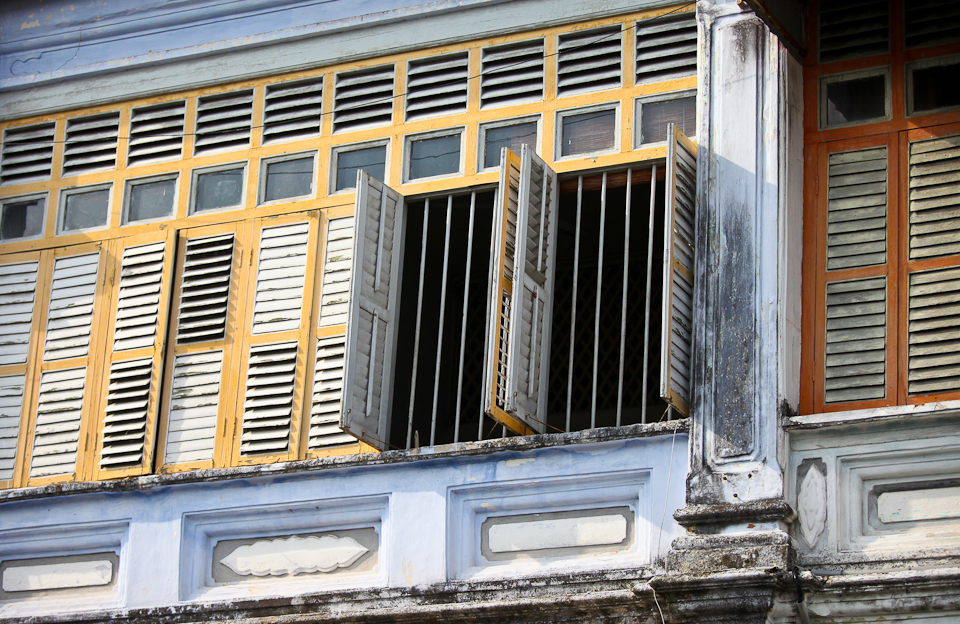
If this status had not been given to the area the magnificent old buildings would have undoubtedly been razed to the ground to make way for more high-rise. For a cultural traveller and self-confessed foodie such as myself, the pleasures of Penang are its heritage and its cuisine. The old colonial-era shophouses are superb – although many are in desperate need of repair – and the choice of Hainanese, Hokkien, southern Indian, and Malay food is a culinary adventure.
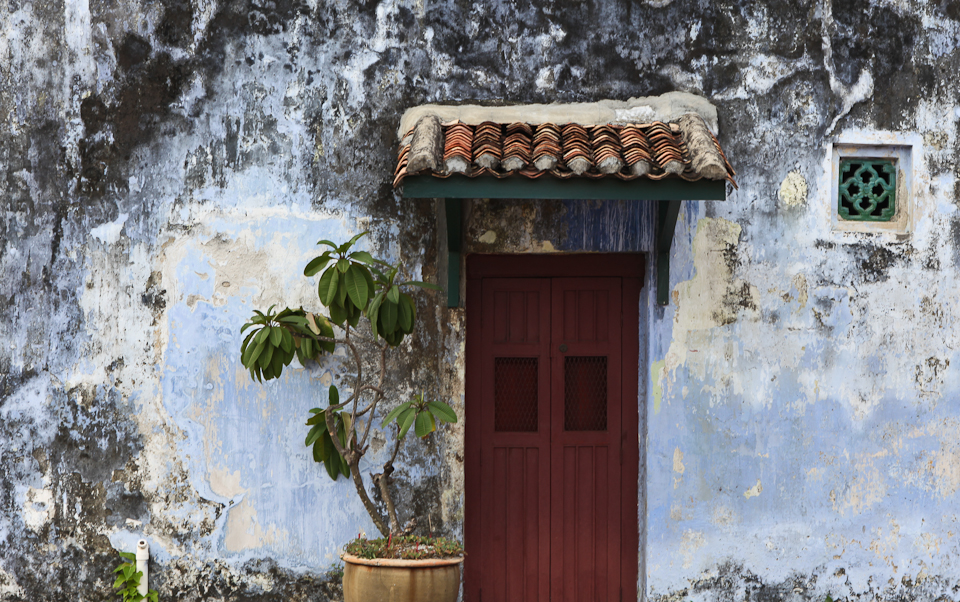
The visual landscape of Penang is defined by decaying period architecture, temples and shrines, and bustling food stalls, all of which offer the chance to get some lovely shots of details.
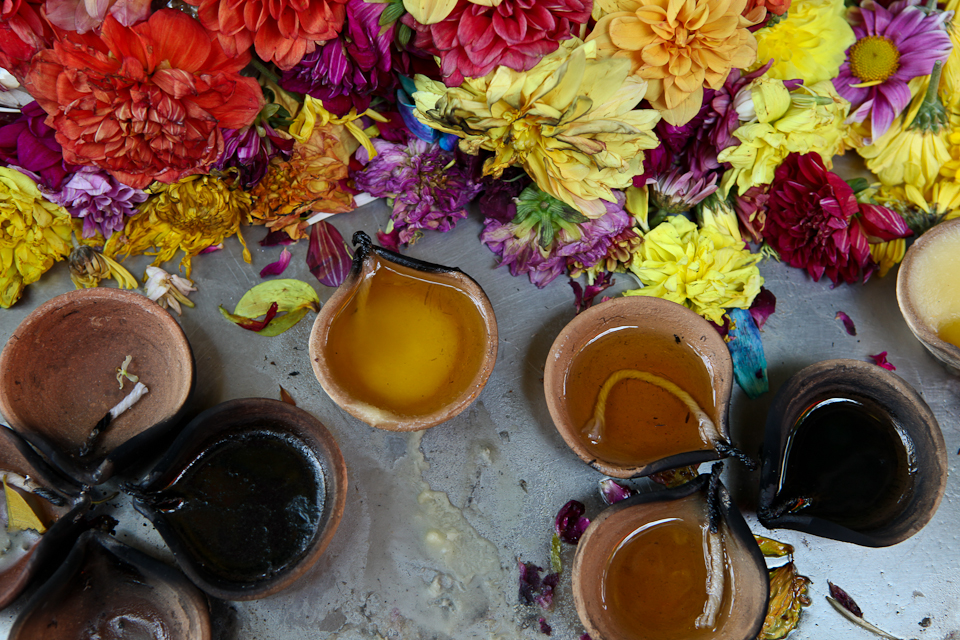
During my stay I was fortunate enough to experience the luxury of the Eastern & Oriental Hotel, and the wonderful Straits Collection at Stewart Lane, a block of carefully restored shophouses in the heart of the old town.
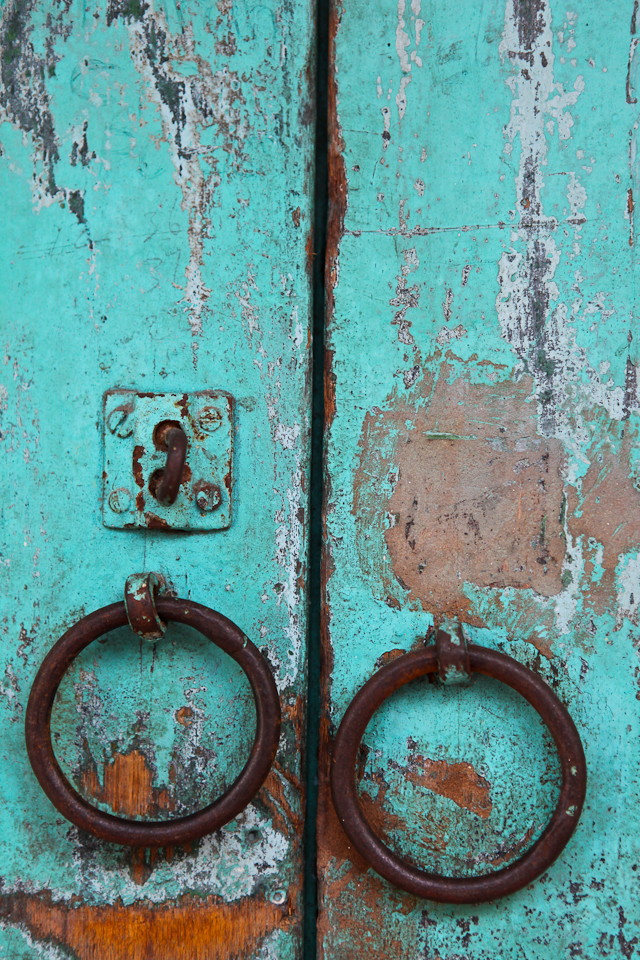
1 comment » | Travel
August 19th, 2010 — 8:25pm
Here’re a few shots taken in the markets showing women and children with the distinctive tanaka face powder.
Burmese people are some of the most welcoming and friendly you could ever hope to meet. Wander around the vibrant markets and every glance or tentative inquiry is greeted with a capacious smile and a handful of playful words shared with neighbours.
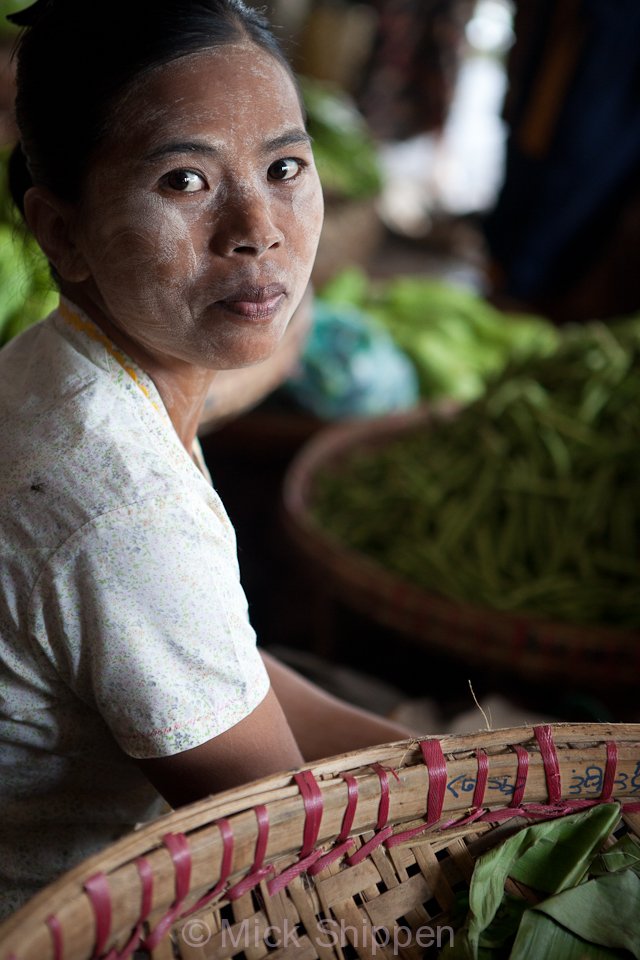
In the early morning and late afternoon, side streets are transformed into a canvas brushed with strokes of violent colour reminiscent of Gauguin’s palette. Squatting among nests of verdant green produce traders draw customers as eager for gossip as they are for fresh produce and a good deal. The atmosphere of markets in Myanmar is intoxicating. The lips of young girls offer thick smoky smiles whilst gently holding slender green cheroots and old ladies dispense ‘cure all’ herbal remedies.
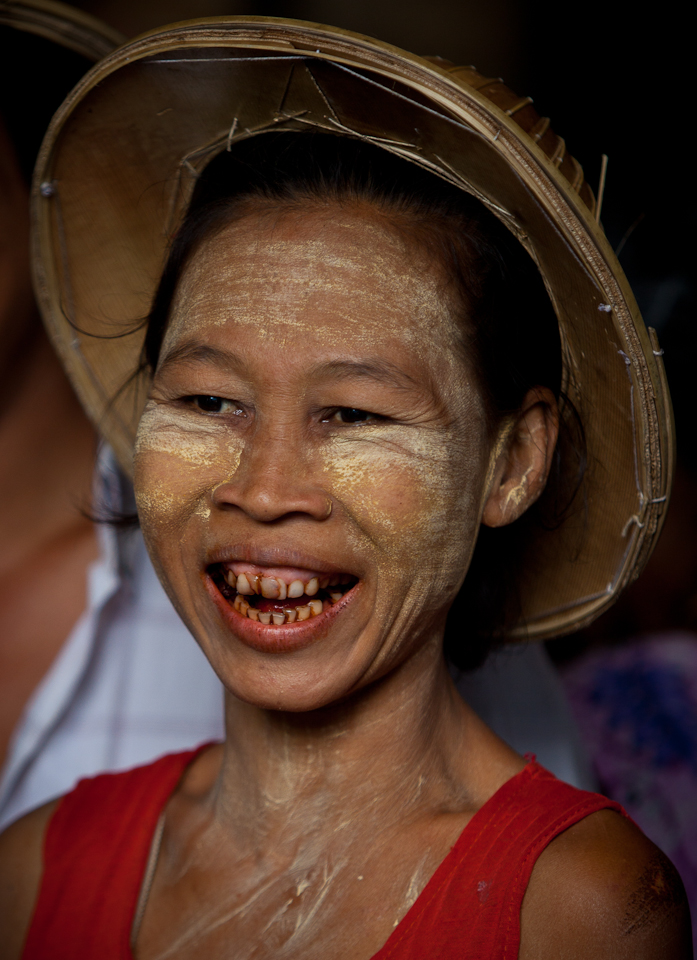
A raucous laugh may reveal a flash of gold proving that in Yangon it really does pay to put your money where your mouth is, or betel stained teeth from years of habitual chewing.
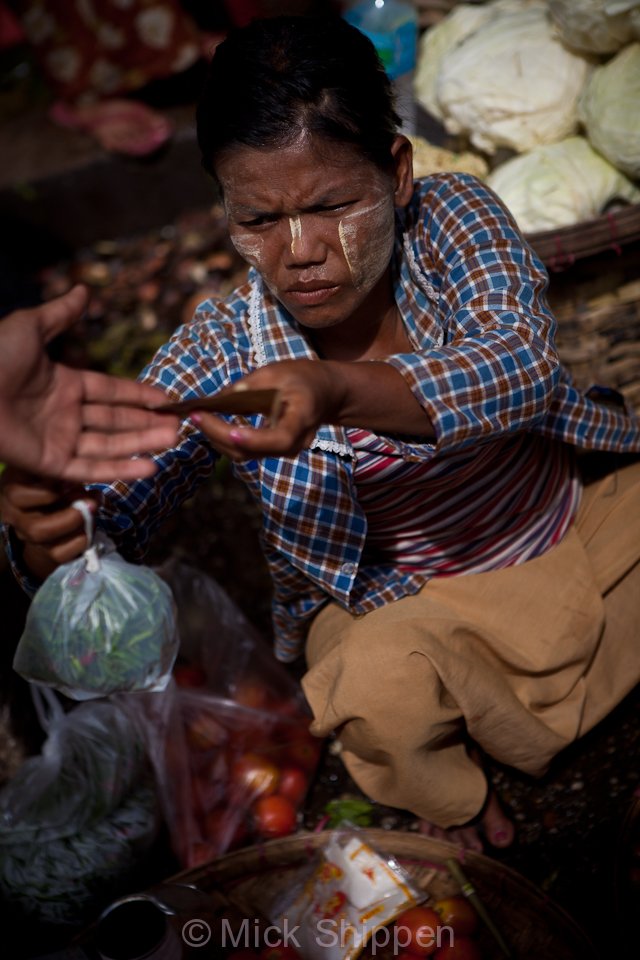
Each woman’s face, cheeks washed with pale yellow powder extracted from the bark of the tanaka tree, exerts a mesmerising glow – smears of light illuminating sun-blessed skin. The markets of Myanmar are a sight for sore eyes; crowded and chaotic but never claustrophobic.
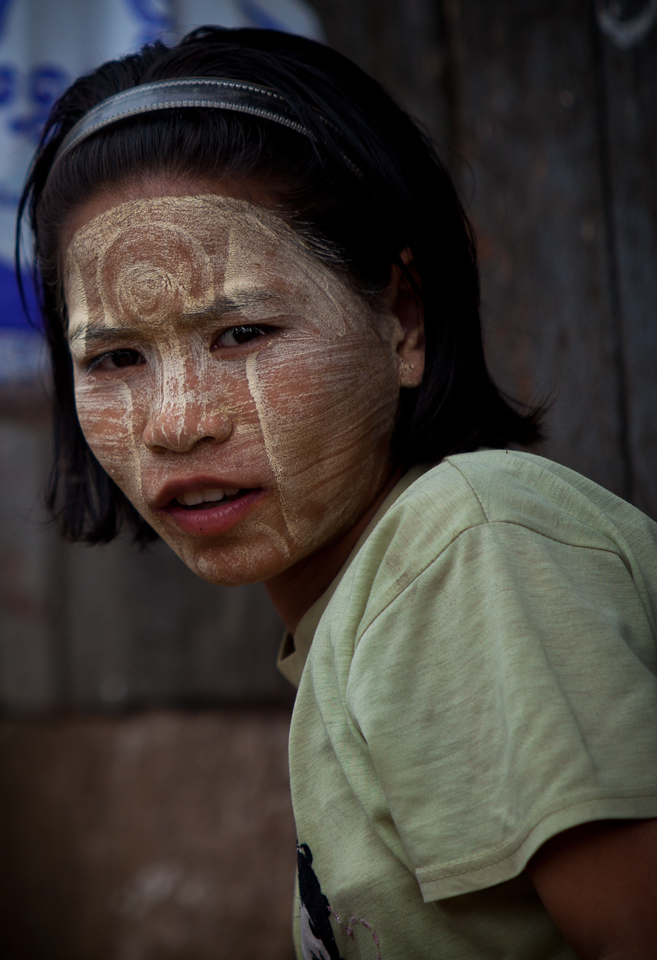
Tanaka wood is sold in the markets. It is rubbed on a grinding stone with a little water to extract it and then brushed on the cheeks, neck and arms.
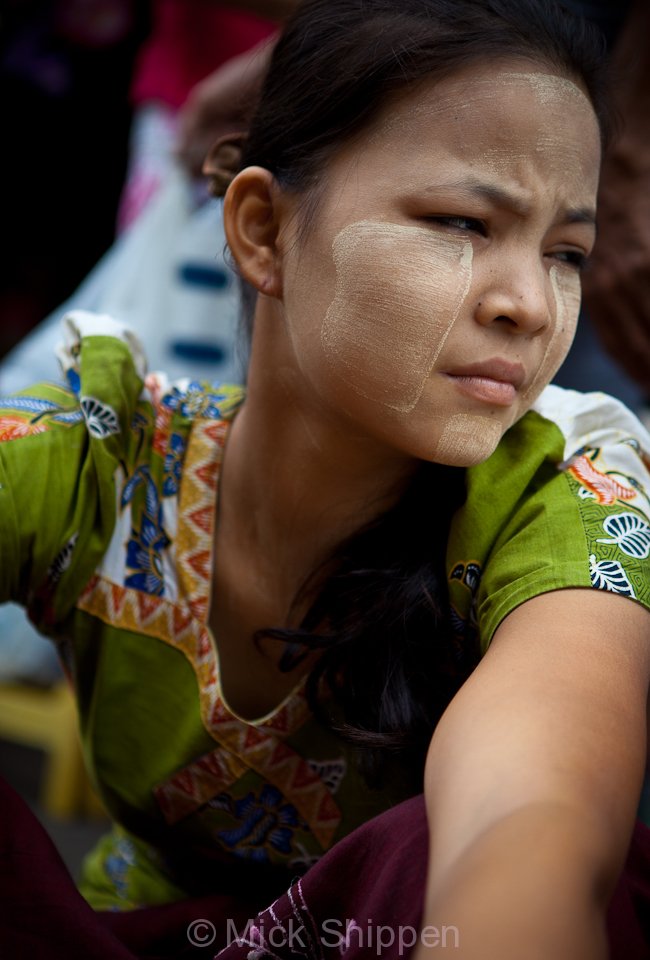
Tanaka is used a beauty product but also as a sunscreen and skin softener. These days blocks of pre-ground powder and soaps are also available.
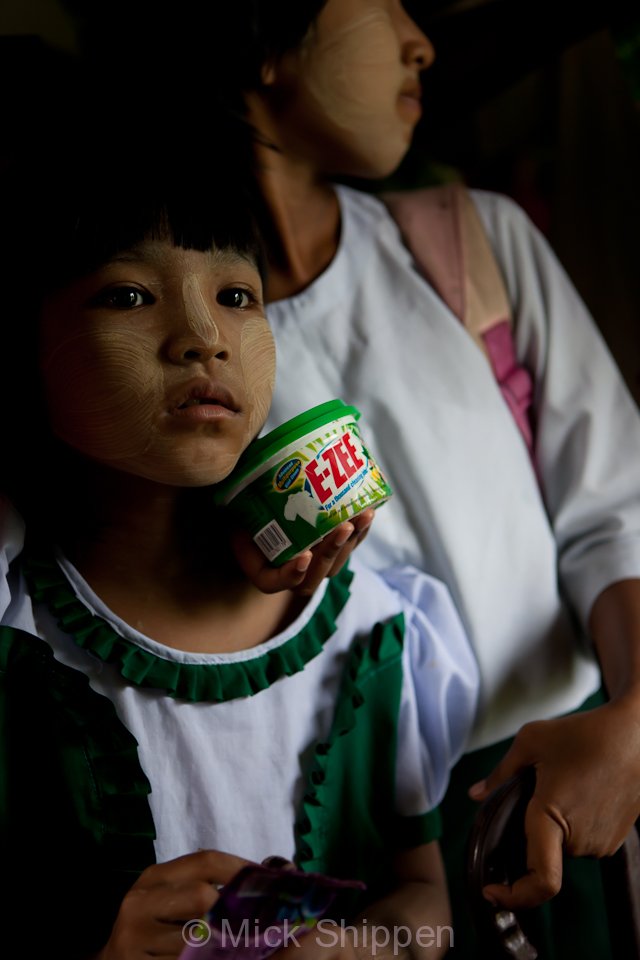
I’ll post some shots of markets at a later date.
Comment » | Travel
August 18th, 2010 — 8:51pm
Here’re a few shots taken in Yangon last week of trains, rickshaws and people in them.
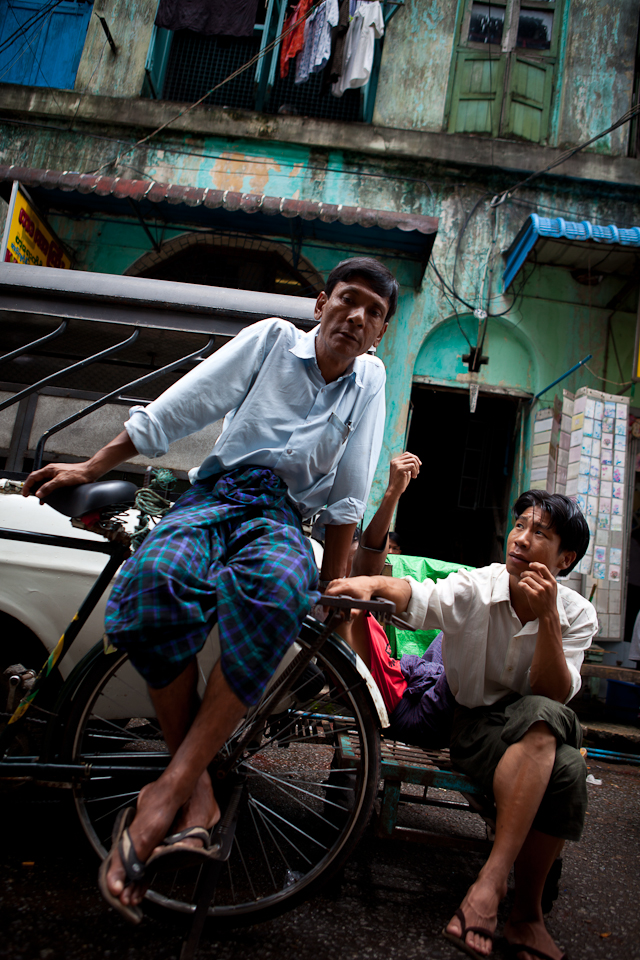
Traffic in Yangon is light considering the population is around 4.5 million. This is due to tight restrictions on the importation of vehicles. Most cars and buses are Japanese imports from the 1980s such as Nissan Sunny Super Saloons and Toyota Corollas that have seen better days.
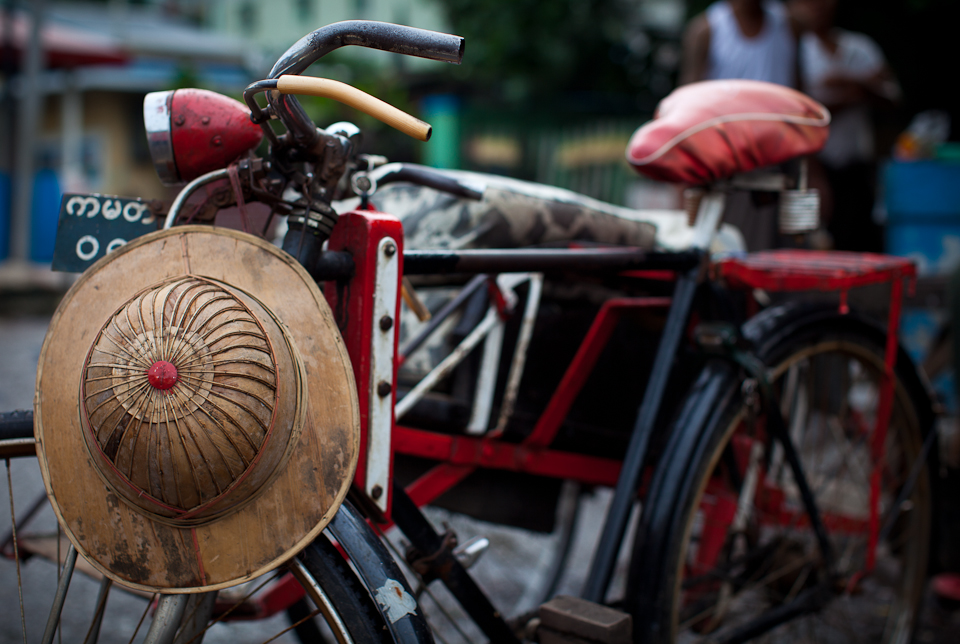
Even prices for a battered car are very high and can only be afforded by the well off. There are no motorcycles at all as they are said to cause too many accidents and were outlawed in the city last year.
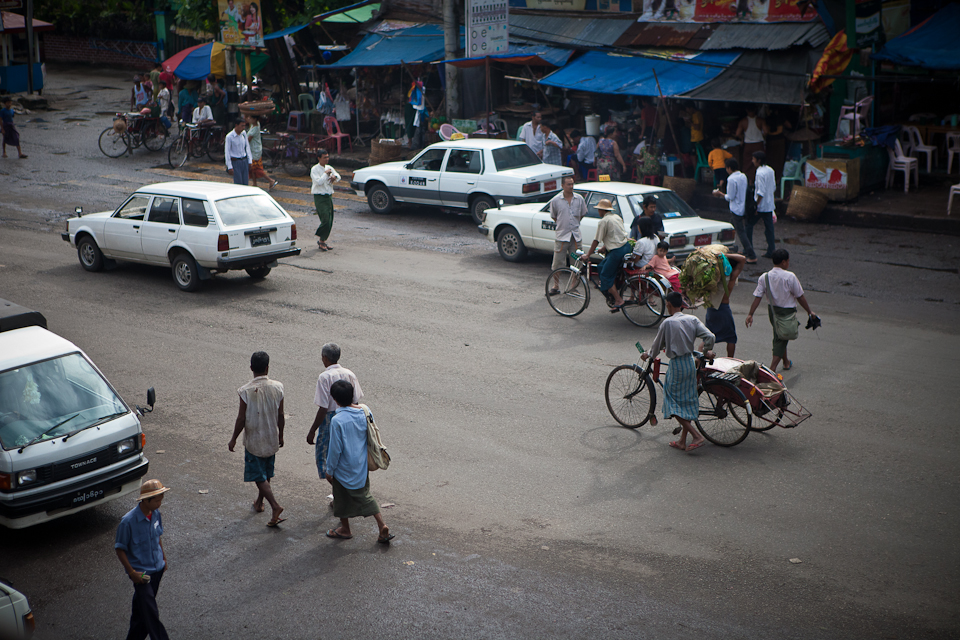
The majority of people in Yangon use the circular line train, bus, unmetred taxi, trishaw, bicycle, or simply walk. Of course, all this makes it a very pleasant city to get around.
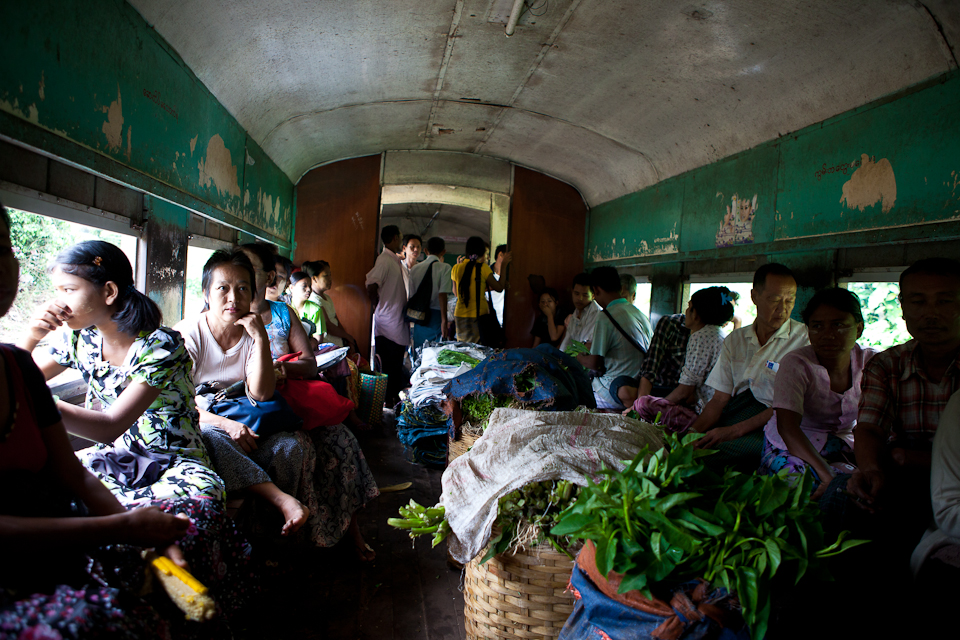
The train in Yangon is one my favourite travel experiences in any Southeast Asian city, taxis are dirt-cheap, trishaws are a lot of fun, and walking around Yangon with a camera, a joy. In fact, all things considered, Yangon’s traffic policy is something that most cities around the world could do with implementing…although as the owner of a Triumph Bonneville T100 I might have to take issue with the bit about banning motorcycles!
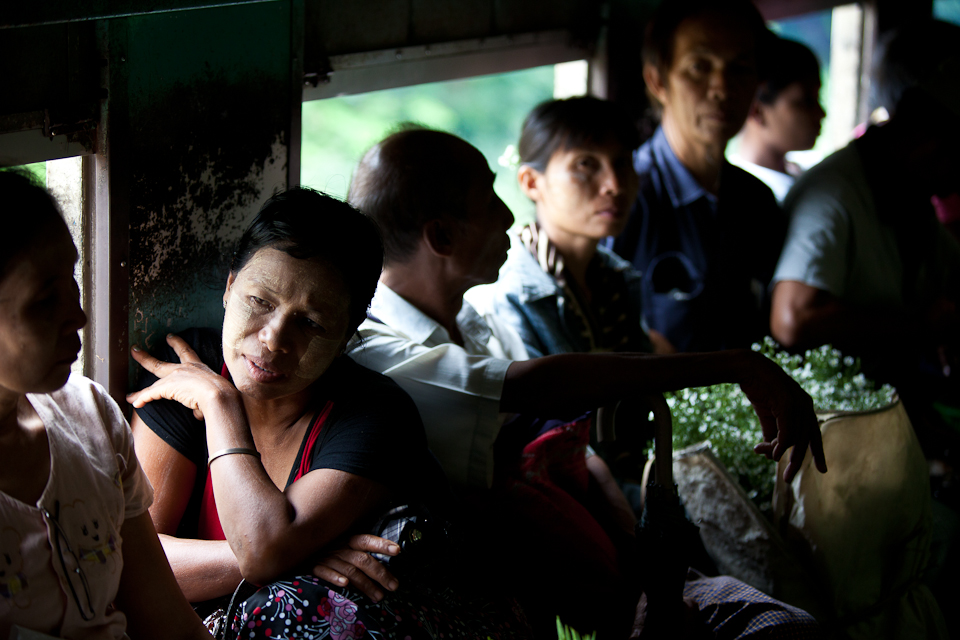
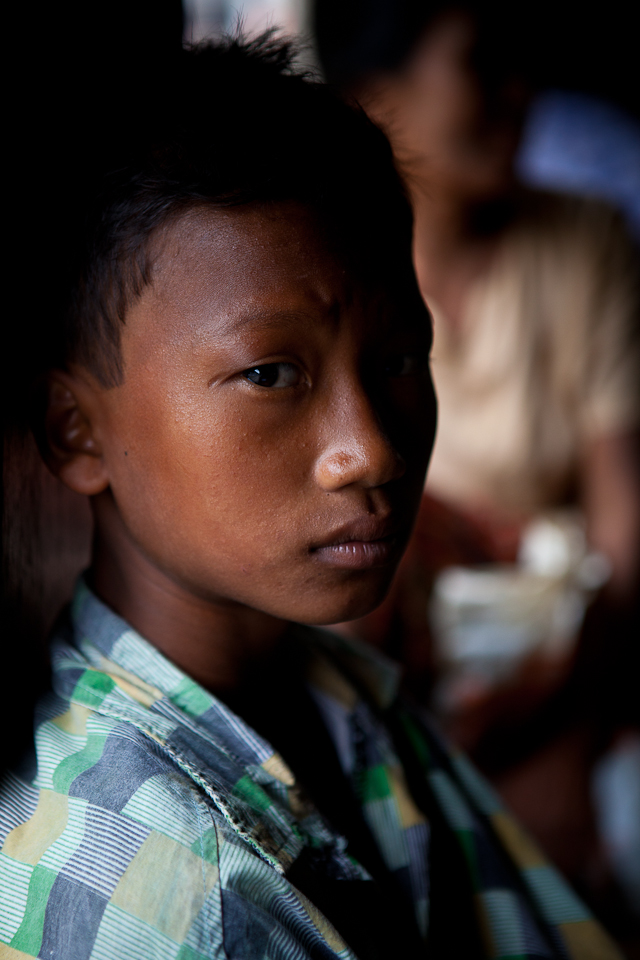
1 comment » | Travel
August 18th, 2010 — 5:58pm
You don’t have to be in Myanmar long before it becomes apparent that the locals love chewing betel nut. Here’s a section from my book, The Traditional Ceramics of South East Asia on the topic to accompany a few recent pictures. More shots can also be viewed in the Myanmar Gallery.
The chewing of betel nut in Myanmar is still prevalent through the country and popular with men and women alike. On almost every street corner sellers stand behind their counters preparing small wraps of the mildly stimulating mixture. Mobile vendors also walk the streets with wooden trays around their necks, each well stocked with the essential ingredients.
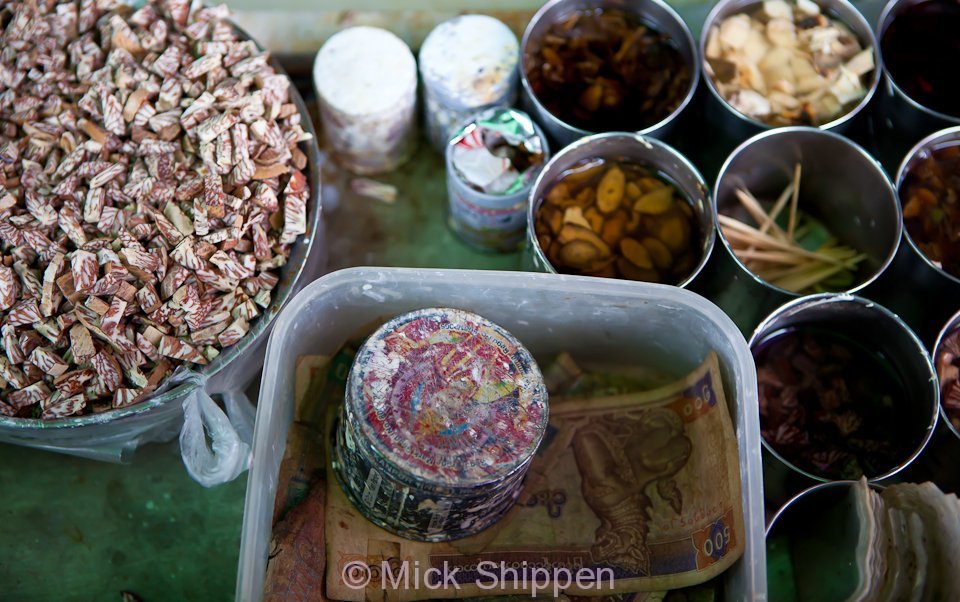
Between friends and visitors a welcome is often extended in the form of these small emerald-green packets – the ‘local chew’. Stained orange lips and teeth as well as the ubiquitous rust-coloured splats on the pavements are all signs of betel chewing. The nut itself which is responsible for the trademark orange staining is from the areca palm while the leaf in which it is wrapped comes from the piper betel vine.
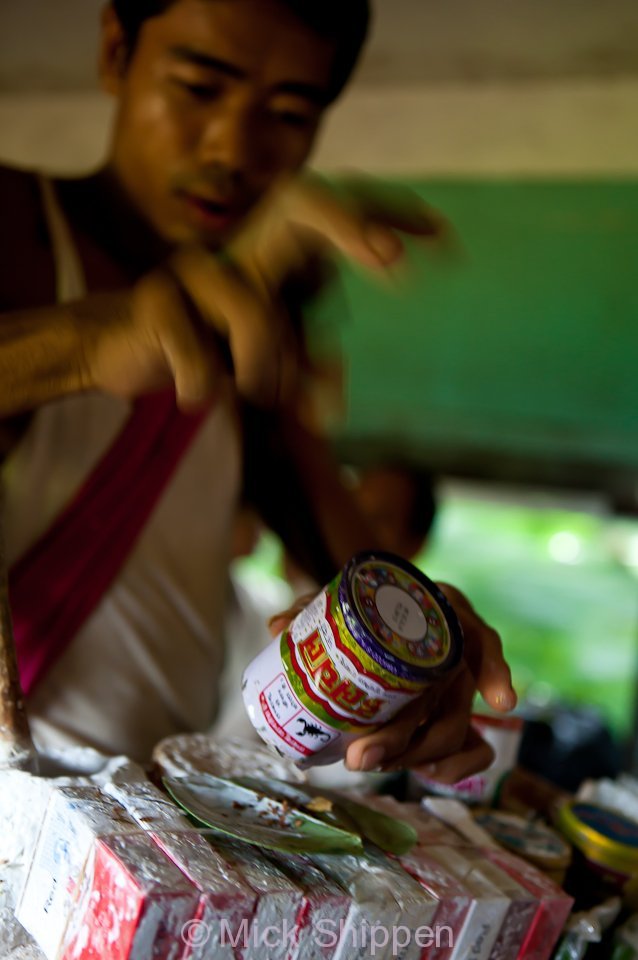
The contents of the betel chews vary according to personal taste. The traditional mixture in Myanmar consists of a betel leaf smeared with slaked lime paste (calcium hydroxide), a few slithers of betel nut and some tobacco leaves. This mixture is generally the choice of men.
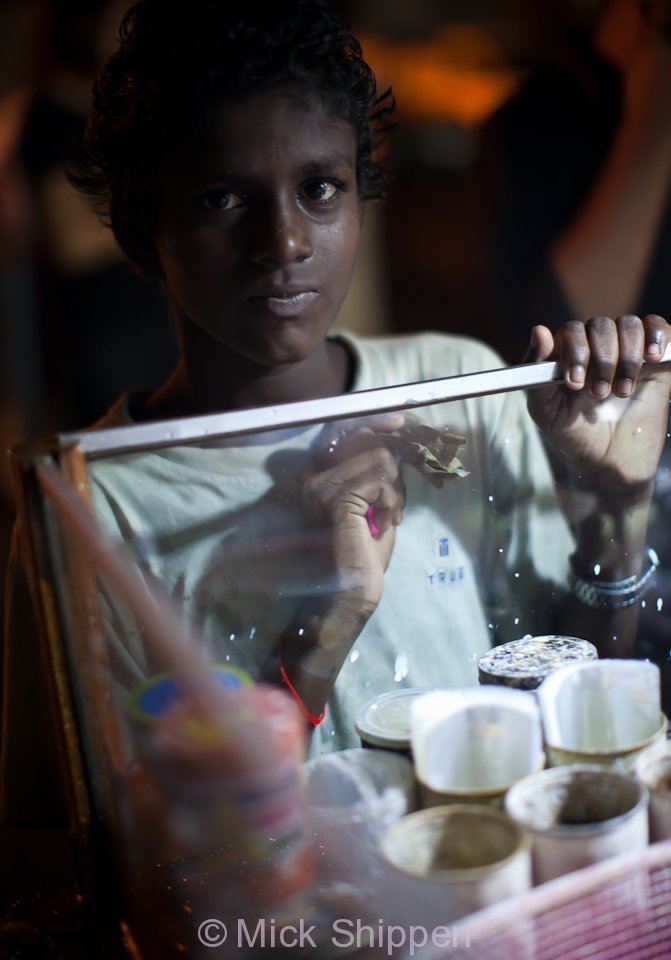
For those who prefer a richer taste a variety other ingredients can be added including rice liquor, cloves, cumin seeds, cardamom and the edible nut from a huge seed known locally as gon nyin. This particular mixture is enjoyed by both men and women.
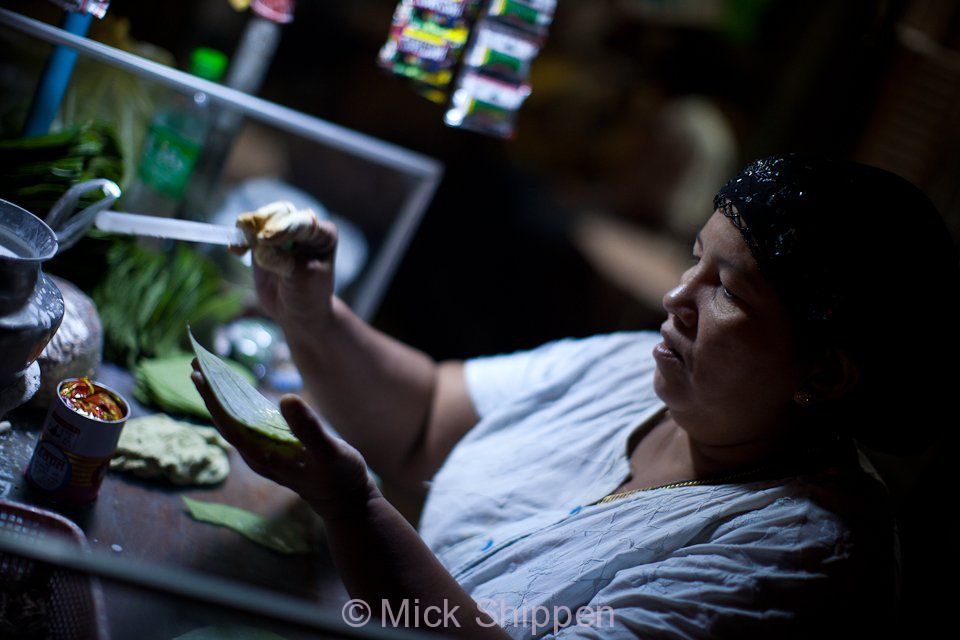
Comment » | Travel
August 17th, 2010 — 1:43pm
It’s almost two years to the day since my last visit to Myanmar so I was delighted to make a five day trip to Yangon last week. It was a welcome break from the daily grind and a chance to explore ideas for a new book that I have been procrastinating about for far too long.
Myanmar is a country of real beauty and intrigue and has retained a strong sense of its cultural identity. Little has changed within the country for decades and as a result it offers a glimpse into lifestyles and traditions which are fast disappearing elsewhere in the region. Despite its abhorrent government, the people are as friendly and welcoming as you could wish for and it is always a pleasure to meet and talk with them.
I am slowly sorting through my snaps from the trip and will be posting more over the next few days. Although there is no shortage of subjects or inspiration in a city as colourful and vibrant as Yangon, one of the highlights for me was simply photographing a bus stop in the rain.
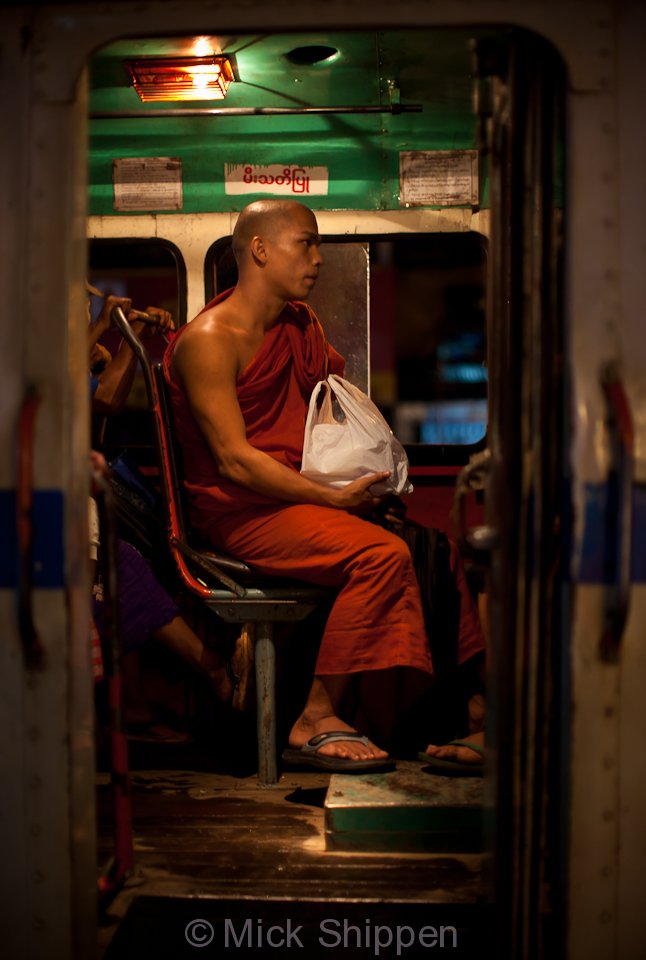
I was wandering back to the hotel from a restaurant one evening and stopped to photograph passengers getting on and off buses in a dimly lit street. Aided by a 50mm 1.2 lens I spent half an hour getting soaked to the skin and the shutter button on my camera is now buggered but it was worth it.
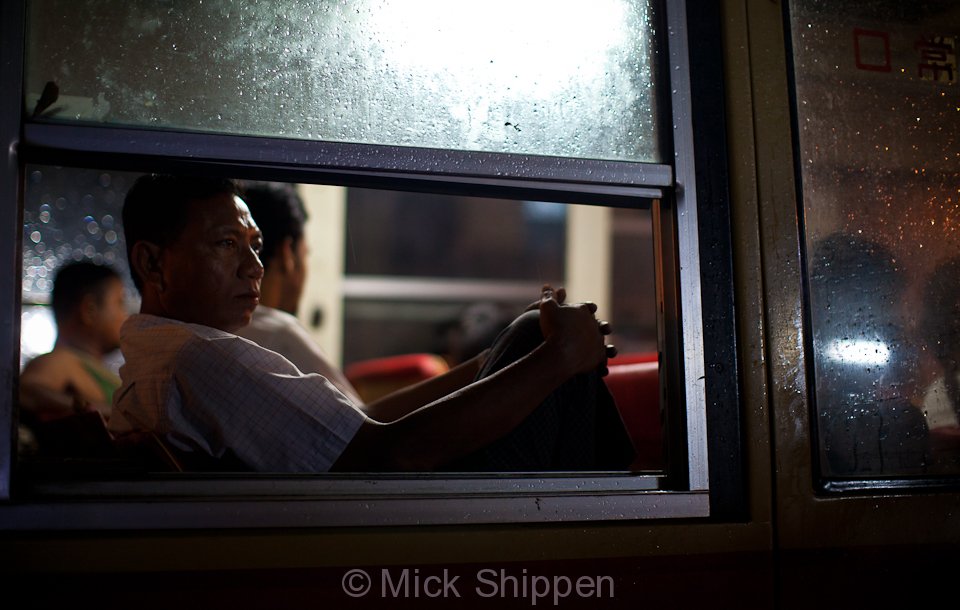
A constant flow of buses pulls up with bus boys touting for customers by shouting out the destinations. Packed with workers going home for the evening, the old Japanese and Korean buses labour through the streets of downtown Yangon then out to the suburbs.
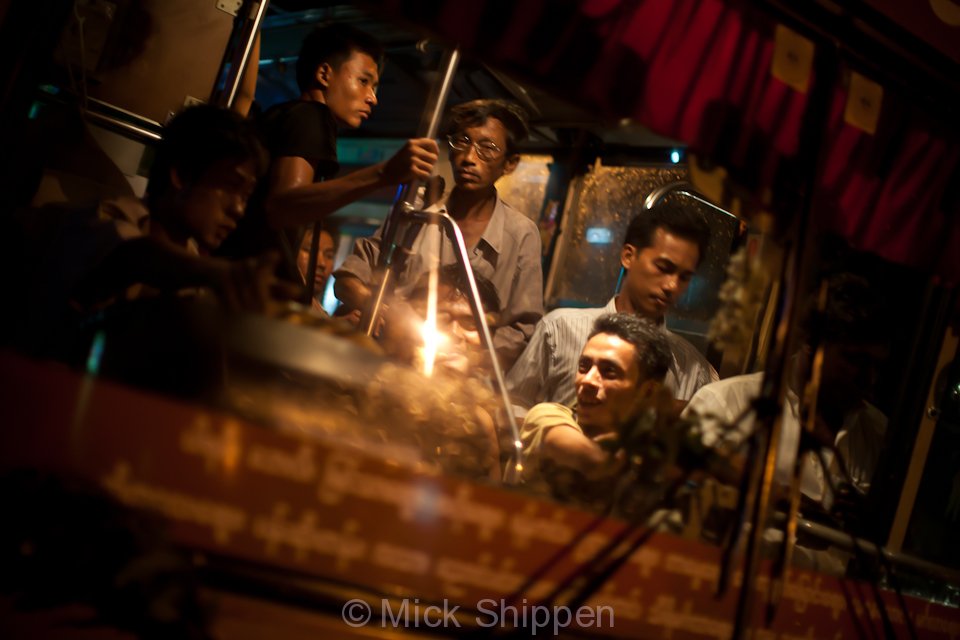
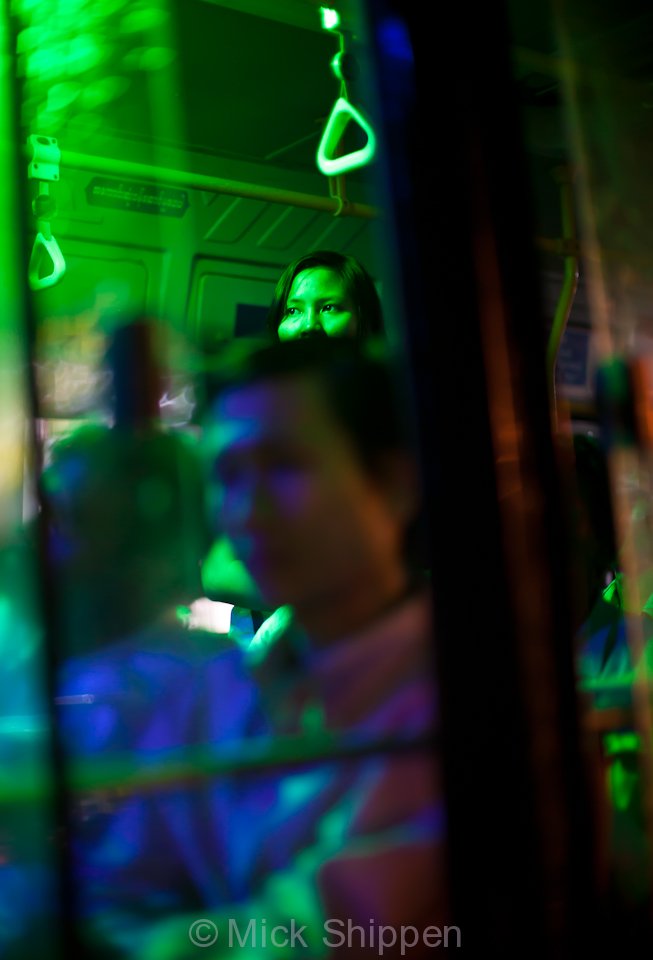
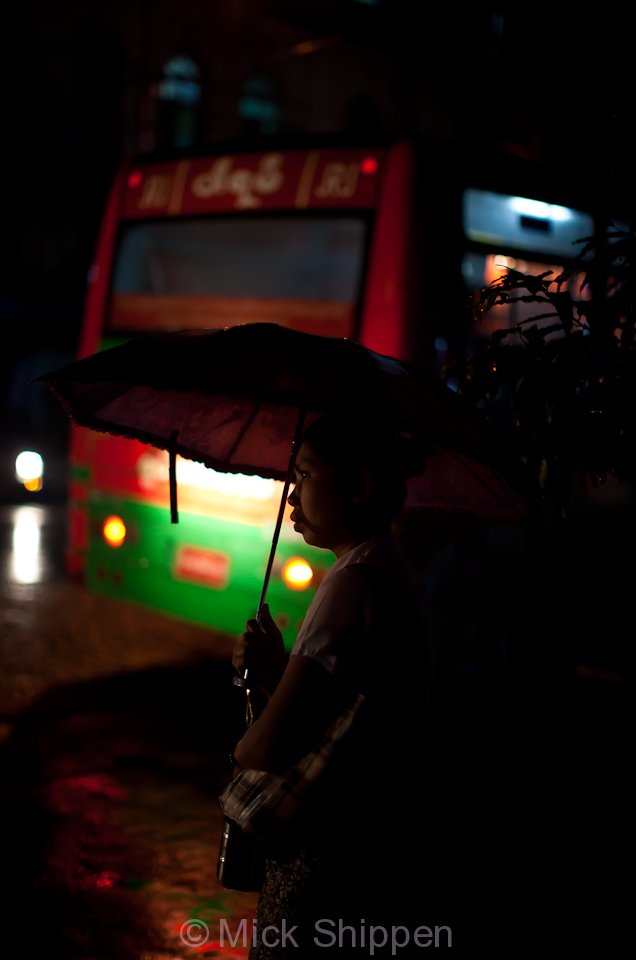
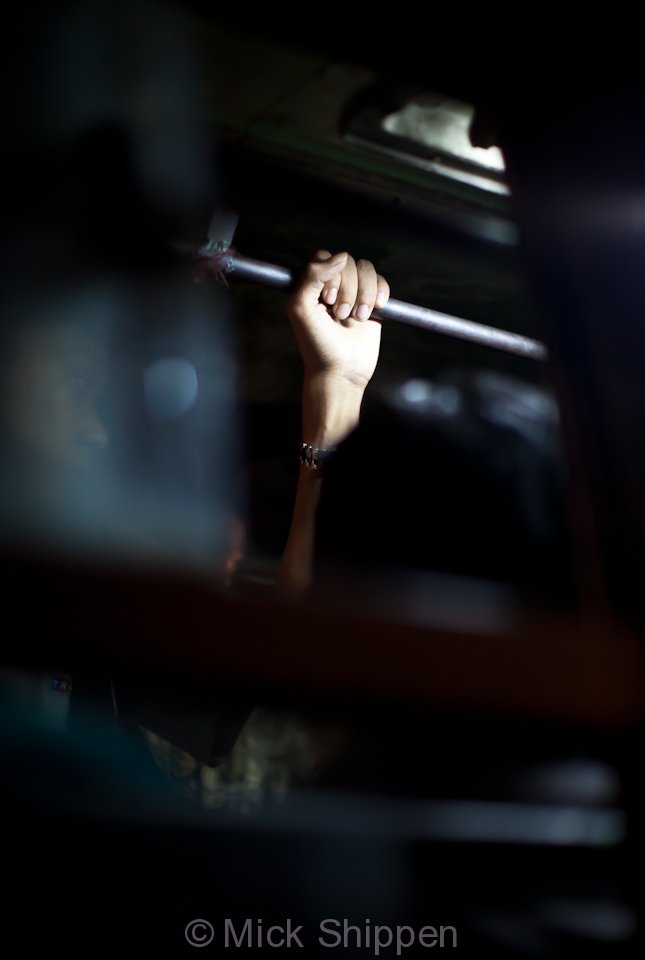
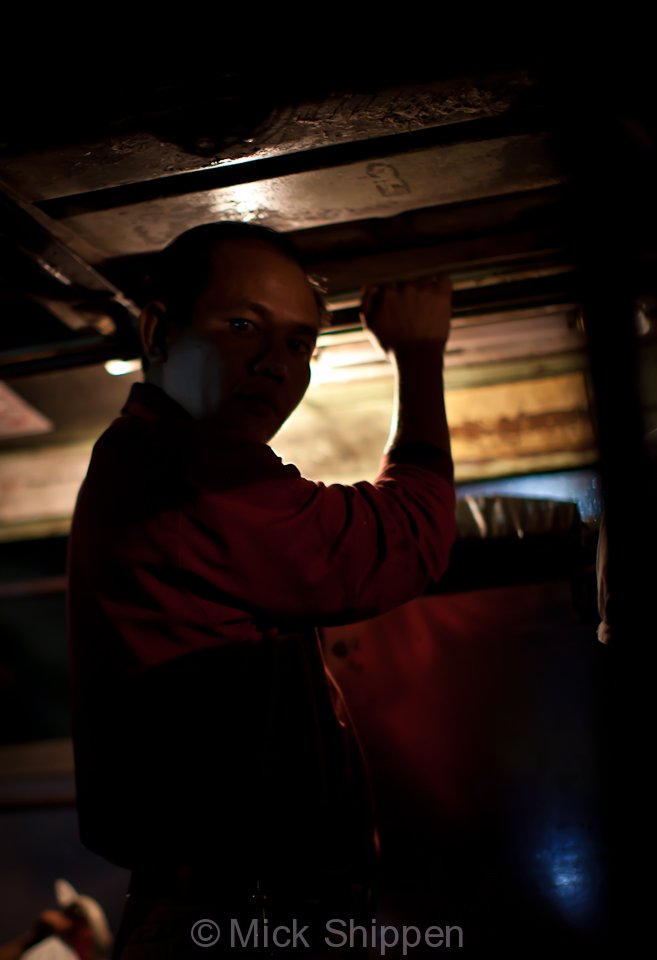
Comment » | Travel











































